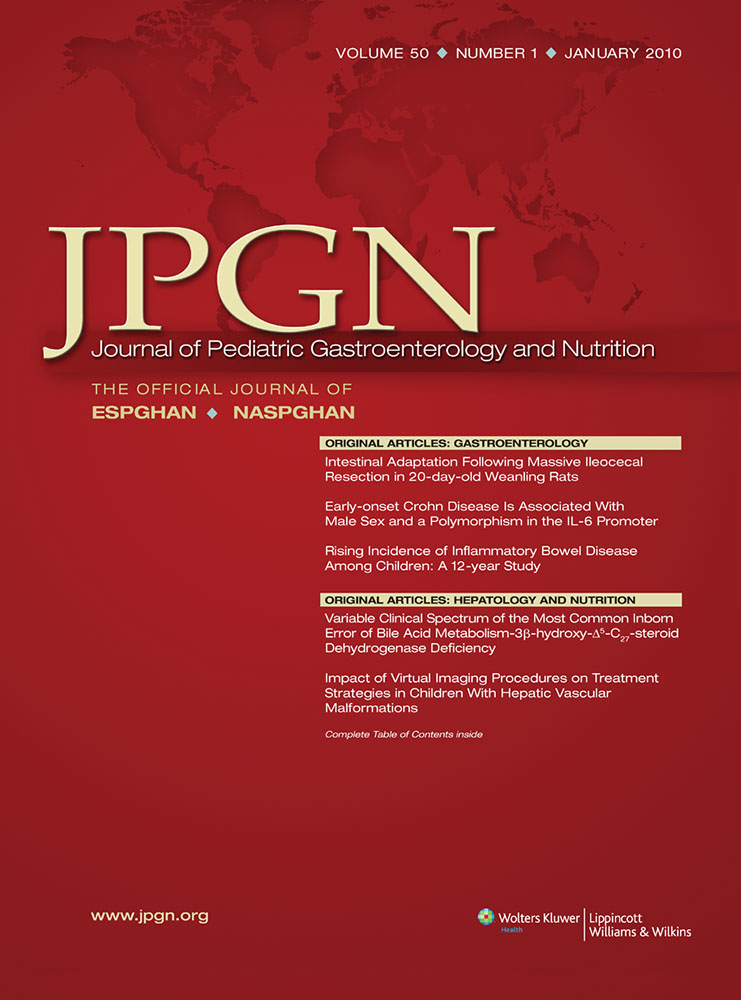Variable Clinical Spectrum of the Most Common Inborn Error of Bile Acid Metabolism—3β-hydroxy-Δ5-C27-steroid Dehydrogenase Deficiency
The abstract was presented as an oral presentation at the 10th Spring Meeting of the Royal College of Paediatrics and Child Health in York, April 4, 2006.
The authors report no conflicts of interest.
ABSTRACT
Objective:
We studied the clinical features of children with 3β-hydroxy-Δ5-C27-steroid dehydrogenase (3β-HSDH) deficiency presenting to King's College and Great Ormond Street hospitals between 1989 and 2005. The diagnosis was made biochemically by detection of sulphated dihydroxycholenoic acids and trihydroxycholenoic acids in urine by fast atom bombardment mass spectrometry or electrospray ionisation tandem mass spectrophotometry and a plasma bile acid profile showing absent or low cholic and chenodeoxycholic acid levels and high concentrations of 3β-7α-dihydroxy-5-cholenoic acid and 3β-7α-12α-trihydroxy-5-cholenoic acid.
Results:
Eighteen children (12 male) with 3β-HSDH deficiency were identified and diagnosed at a median age of 1.35 years (range 8 weeks–11 years). The presenting features included neonatal cholestasis (n = 11), rickets (n = 8, 1 of whom also had hypocalcaemic tetany, seizures, and normal liver biochemical markers), hepatomegaly (n = 7), pruritus (n = 3), and steatorrhoea and failure to thrive (n = 3). Ten children had low serum 25-OH vitamin D levels, of whom 8 also had low vitamin E and 6 had low vitamin A serum levels. Liver histology showed giant cell change and hepatocyte disarray in all with added features of cholestasis in 11, bridging fibrosis in 6, micronodular cirrhosis in 1, fatty change in 1, and active lobular and portal inflammation in 1. Five patients were treated with cholic acid and chenodeoxycholic acid (7 mg · kg−1 · day−1 of each), 7 with chenodeoxycholic acid only (7–18 mg · kg−1 · day−1), and 1 with cholic acid (8 mg · kg−1 · day−1) only. Repeated liver biopsies performed in 4 patients 6 months after starting replacement therapy showed improved histological changes. Three children died untreated before 5 years of age. After a median follow-up of 5.5 years (range 1–17 years) 12 out of 13 treated children have no clinical signs of liver disease or of fat-soluble vitamin deficiency.
Conclusions:
3β-HSDH deficiency is a rare inborn error of metabolism with diverse clinical features. Early replacement treatment leads to clinical and biochemical control and prevents chronic liver and bone disease, at least in the medium term.




